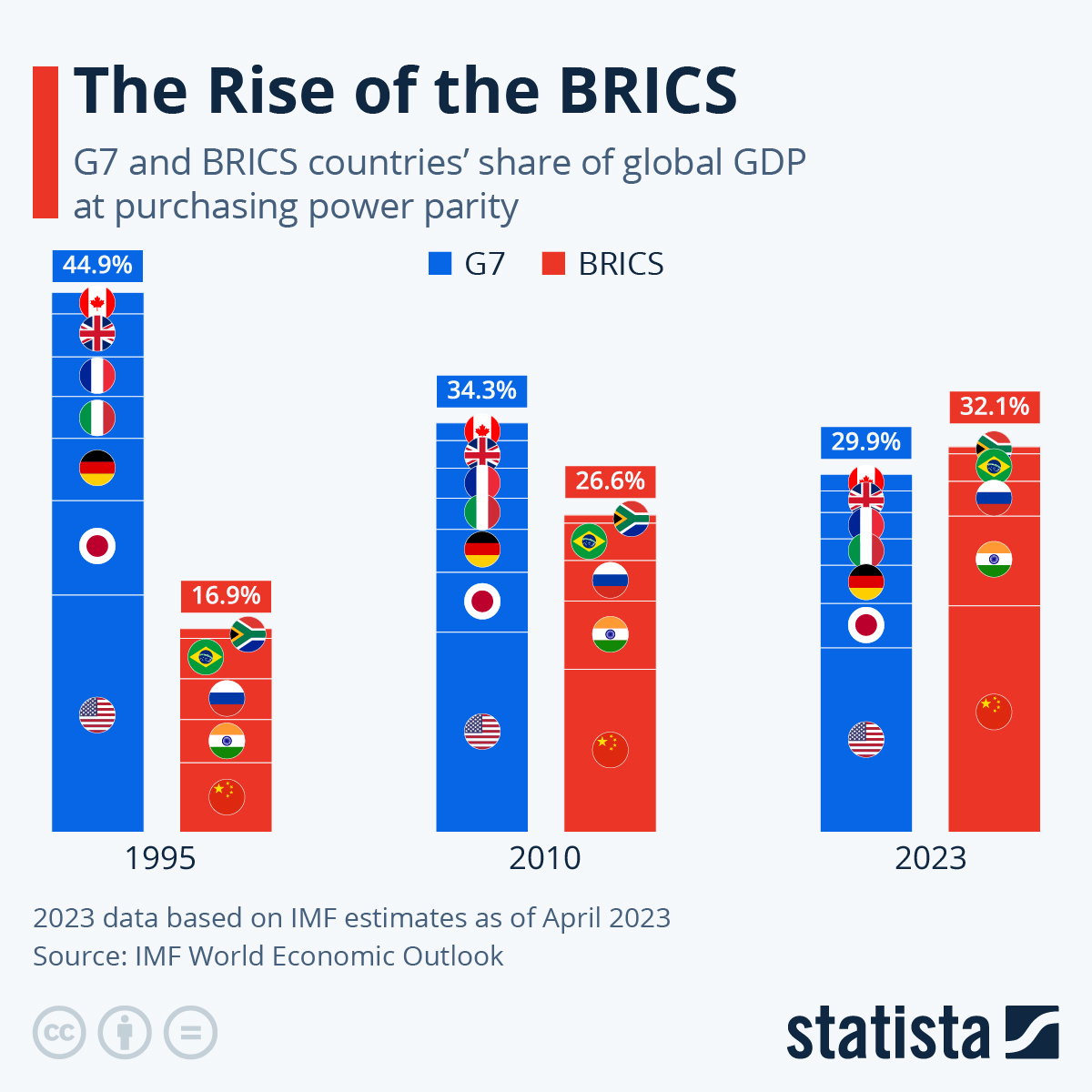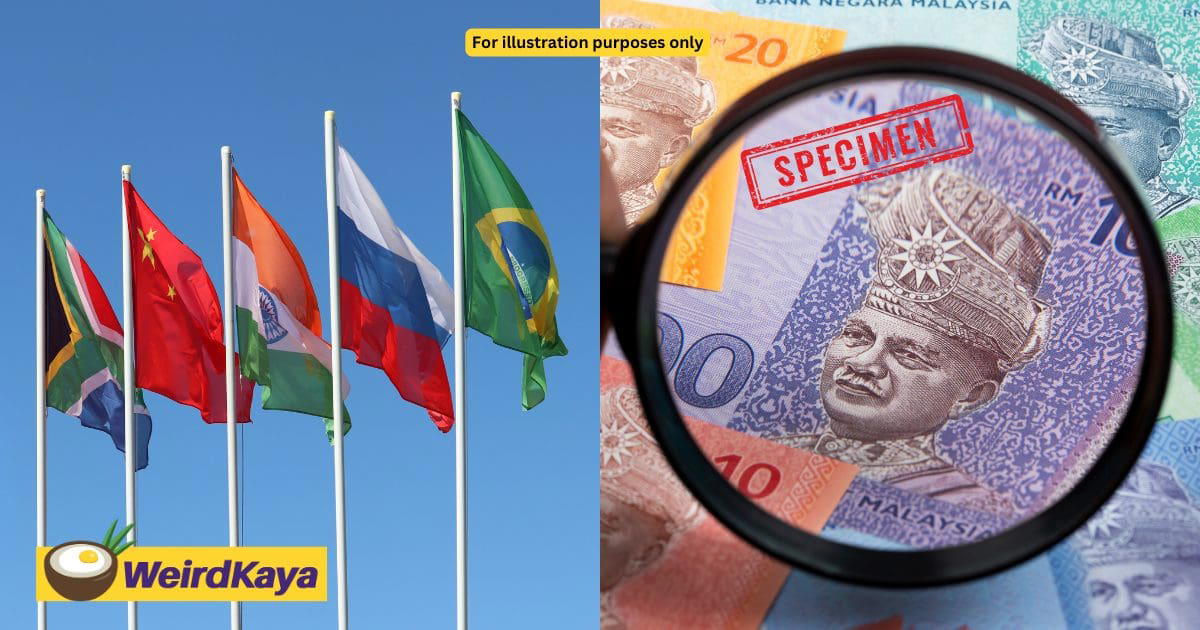Recently, Malaysia made headlines with its announcement of intent to join an intergovernmental organisation named BRICS (Brazil, Russia, India, China and South Africa), marking a significant expansion for the group.
Prime Minister Anwar Ibrahim affirmed Malaysia’s commitment to this strategic move in an announcement made prior to a visit by Chinese Premier Li Qiang to celebrate 50 years of diplomatic ties between China and Malaysia.

According to Anwar, the driving factor for Malaysia’s application to join BRICS was to send an indirect message that minority countries like Malaysia have the right and authority to make its own political decisions.
We can no longer accept the scenario where the West wants to control the discourse.
As of now, Malaysia is currently awaiting final procedures from South Africa to formalise its membership before it’s officially welcomed into the fold.
What is BRICS & how did it come to being?
BRICS is an acronym for five major emerging economies: Brazil, Russia, India, China, and South Africa.

These countries are distinguished by their large, fast-growing economies and their significant influence on regional and global affairs.
In international politics, a country’s economic size is measured by its total GDP (Gross Domestic Product), which serves as a crucial indicator of its political power. As such, the US is reckoned as a superpower due to its economy representing 20-30% of the global economy.
In contrast, China, Brazil, India, and Russia ranked 6th, 11th, 13th, and 15th in terms of GDP respectively in 2001, far behind the G7 (Group of Seven; Canada, France, Germany, Italy, Japan, United Kingdom and United States) countries.
Furthermore, since the fall of the Soviet Union in 1991, the world has been predominantly unipolar, with the US occupying the seat of economic and military domination.
Seeing the need to counterbalance the US’ political influence, the countries behind BRICS decided to come together in a single organisation in 2009 with the shared ideology of multipolarism, which advocates for a world with multiple significant powers.
Key objectives & initiatives
Like any other international organisations, BRICS has its own list of objectives and key initiatives, which is as follows:
Objectives:
- Promote peace, security, and development.
- Reform international financial and economic institutions to be more representative and equitable.
- Enhance cooperation in various sectors, including trade, investment, infrastructure, and sustainable development.
Initiatives:
- New Development Bank (NDB): Established in 2014, the NDB funds infrastructure and sustainable development projects in BRICS and other emerging economies.
- Contingent Reserve Arrangement (CRA): This framework provides support through liquidity and precautionary instruments in response to short-term balance of payments pressures.
What joining BRICS means for Malaysia

With Malaysia waiting for its BRICS application to be approved, it’s important to look into some of the benefits that await if Malaysia were to be included into BRICS:
- Increased trade and investment: Malaysia can access to larger markets and attract more investments from other BRICS countries. This can lead to an increase in exports, particularly in sectors like electronics, palm oil, and rubber.
- Infrastructure development: With access to the New Development Bank (NDB), Malaysia can secure funding for large infrastructure projects, which can boost economic growth and create jobs.
- Strengthening global influence: Being part of BRICS elevates Malaysia’s role on the global stage, allowing it to participate more actively in shaping international economic policies.
- Advocating multipolarism: Joining BRICS helps Malaysia’s standing in supporting multipolarism, reducing over-reliance on Western powers and fostering a more balanced global order.
Dedollarisation: The end goal
Given the fact that BRICS largely slants towards a multipolar view on how global powers should operate, it’s no wonder that it’s primary agenda is to create a new global economic order that is not centred around the US.

A key strategy towards this goal is dedollarisation, which is aimed at reducing reliance on the US dollar in regards to international transactions. BRICS advocates argue that this is key in diminishing the US’ economic dominance.
Throughout the 2010s, BRICS also gained huge momentum thanks to China, where the largest country in the world surpassed Japan to become the world’s second-largest economy.
In the process, China also dethroned the US as the world’s largest economy in terms of purchasing power parity (PPP), something which has triggered a ripple of concern for the Western superpower.

Following China’s meteoric rise in economic power, several countries, including traditional US allies such as Egypt, UAE, Saudi Arabia, and Thailand, have expressed interest in joining BRICS or have since become members as they were convinced that the US’ days of being the sole global superpower may be numbered.
READ ALSO:



